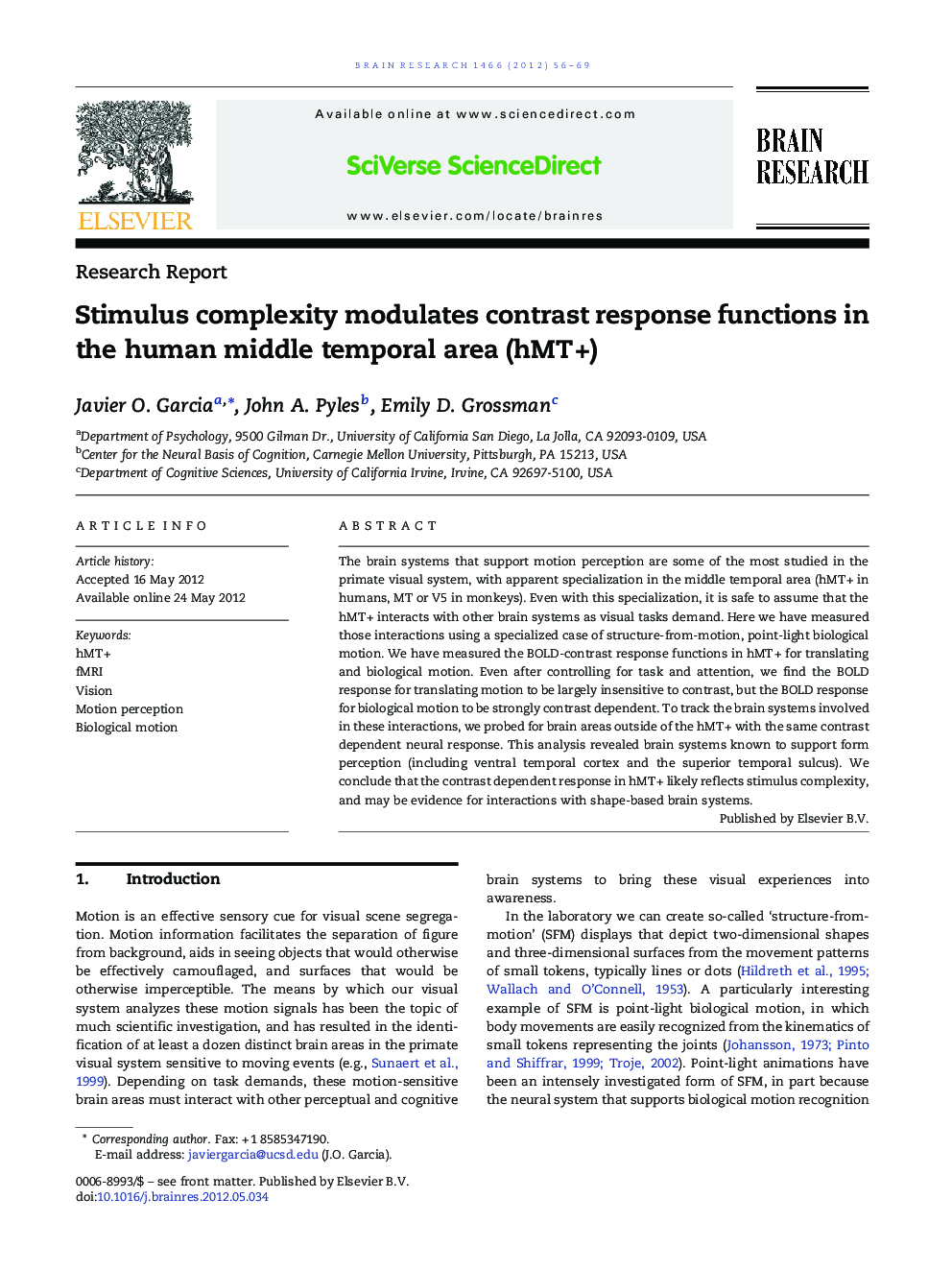| کد مقاله | کد نشریه | سال انتشار | مقاله انگلیسی | نسخه تمام متن |
|---|---|---|---|---|
| 6264263 | 1613973 | 2012 | 14 صفحه PDF | دانلود رایگان |

The brain systems that support motion perception are some of the most studied in the primate visual system, with apparent specialization in the middle temporal area (hMTÂ + in humans, MT or V5 in monkeys). Even with this specialization, it is safe to assume that the hMTÂ + interacts with other brain systems as visual tasks demand. Here we have measured those interactions using a specialized case of structure-from-motion, point-light biological motion. We have measured the BOLD-contrast response functions in hMTÂ + for translating and biological motion. Even after controlling for task and attention, we find the BOLD response for translating motion to be largely insensitive to contrast, but the BOLD response for biological motion to be strongly contrast dependent. To track the brain systems involved in these interactions, we probed for brain areas outside of the hMTÂ + with the same contrast dependent neural response. This analysis revealed brain systems known to support form perception (including ventral temporal cortex and the superior temporal sulcus). We conclude that the contrast dependent response in hMTÂ + likely reflects stimulus complexity, and may be evidence for interactions with shape-based brain systems.
⺠We explore hMT + responses to biological motion and other complex motion stimuli. ⺠Contrast response functions reveal hMT + to be sensitive to stimulus complexity. ⺠This sensitivity is not due to task or attention. ⺠hMT+, though sensitive to motion stimuli, interacts with shape-based systems, as well.
Journal: Brain Research - Volume 1466, 23 July 2012, Pages 56-69